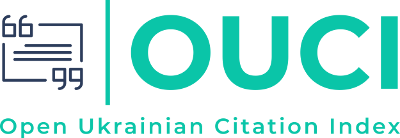ЗАРАХУВАННЯ вступників ДО ЗАКЛАДІВ ВИЩОЇ ОСВІТИ ЯК ЗАДАЧА БАГАТОКРИТЕРІАЛЬНОГО ПРИЙНЯТТЯ РІШЕНЬ за УМОВ НЕВИЗНАЧЕНОСТІ
DOI:
https://doi.org/10.34185/1562-9945-3-128-2020-07Ключові слова:
вища освіта, зарахування вступників, алгоритм Гейла – Шеплі, оптимальність, ефективність, фактори невизначеності, конкурсний бал, пріоритети, фінансуванняАнотація
Проблема аналізу виконання передумов застосування алгоритму Гейла – Шеплі до розподілу вступників є актуальною, оскільки цей алгоритм використовується при прийомі до закладів вищої освіти в Україні та багатьох інших країнах. В роботі визначено основні фактори невизначеності, що стосуються переваг вступників і закладів вищої освіти та впливають на результати розподілу. Перехід до фінансування закладів вищої освіти за результатами діяльності може зменшити вплив цих невизначеностей.
Посилання
The Law of Ukraine «On Higher Education». URL: https://zakon.rada.gov.ua/laws/show/1556-18.
Gale D. College Admissions and the Stability of Marriage / D. Gale and L. S. Shapley // The American Mathematical Monthly, Vol. 69, No. 1 (Jan., 1962), pp. 9-15.
Dotsenko S.I. Mathematical models of stable placements. – Journal of Computational & Applied Mathematics. – 2013. – № 2 (112). С. 3 – 13.
Robert W. Irving, David F. Manlove, Sandy Scott. The stable marriage problem with master preference lists. Discrete Applied Mathematics. 2008. V. 156, I. 15, 6 P. 2959–2977.
David Gale, Marilda Sotomayor. Some remarks on the stable matching problem. Discrete Applied Mathematics. 1985. V. 11, I. 3. P. 223-232.
Tolga Yuret, M. Kadir Doğan. Comparative advantage and preferences in college admissions in Turkey. Procedia - Social and Behavioral Sciences, Volume 15, 2011, P. 1862-1865.
Jinpeng Ma. The singleton core in the college admissions problem and its application to the National Resident Matching Program (NRMP). Games and Economic Behavior, 2010, vol. 69, issue 1, pages 150-164.
Braun, Sebastian Till and Dwenger, Nadja and Kübler, Dorothea F. and Westkamp, Alexander, Implementing Quotas in University Admissions: An Experimental Analysis (December 28, 2011). Working Paper of the Max Planck Institute for Tax Law and Public Finance No. 2011-22. URL: http://cramton.umd.edu/market-design/braun-dwenger-kubler-westkamp-quotas.pdf.
Robert W. Irving. Stable marriage and indifference. Discrete Applied Mathematics. 1994. V. 48, I. 3. – P. 261-272.
H. Ergin, Efficient resource allocation on the basis of priorities, Econometrica. 2002. V. 70, No 6, p. 2489–2497.
Péter Biróa, Tamás Fleiner, Robert W. Irving, David F. Manlove. The College Admissions problem with lower and common quotas. Theoretical Computer Science 411 (2010) 3136–3153.
Min Zhu. College admissions in China: A mechanism design perspective. China Economic Review, Volume 30, September 2014, Pages 618-631.
Péter Biró. Student Admissions in Hungary as Gale and Shapley Envisaged. TR-2008-291. Dept of Computing Science, University of Glasgow. P. 1 – 7. URL: http://www.dcs.gla.ac.uk/publications/PAPERS/8999/ca_tr.pdf
Yan Chen, Onur Kesten Chinese college admissions and school choice reforms: An experimental study. Games and Economic Behavior 115 (2019), P. 83-100.
Adam Kapor, Mohit Karnani, Christopher Neilson. Negative Externalities of Off Platform Options and the Efficiency of Centralized Assignment Mechanisms (2019). URL:
https://christopherneilson.github.io/work/documents/Platforms/platform_externalities.pdf.
Wu, Binzhen and Zhong, Xiaohan, Matching Mechanisms and Matching Quality: Evidence from a Top School in China (April 11, 2013). Available at SSRN: URL:
https://ssrn.com/abstract=1909515 or http://dx.doi.org/10.2139/ssrn.1909515.
Zhelezova E., Izmalkov S., Sonin K., Khovanskaia I. Theory and Practice of Bilateral Markets (2012 Nobel Prize in Economics). Voprosy Ekonomiki, № 1, 2013. – С. 4 – 26.
Kristian Koerselman. Why Finnish polytechnics reject top applicants. URL:
https://arxiv.org/pdf/1908.05443.pdf
L. Hrynevych The results of the 2019 admission campaign. URL: https://mon.gov.ua/storage/app/media/vishcha-osvita/vstup-2019/2019/08/06/MON-05-08-2019-VSTUP.pdf















